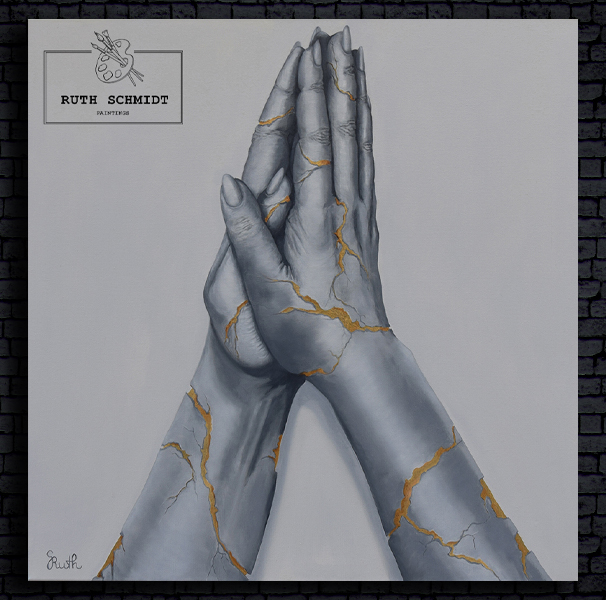
60×60 cm, oil on canvas
There are times in life when all our pillars are shaken and we don't understand many things. Sometimes we don't understand God... why does He allow things? There are breaking points in trust, faith, hope, but there is no other solution but to stand up and move on. Maybe we'll be stronger, maybe even wiser... maybe we'll never get answers... but life goes on...
"Kintsugi is the Japanese art of putting broken ceramic pieces together with gold. By embracing mistakes and imperfections, you can create more beautiful works of art.
In today's world everyone wants perfection or the appearance of it. We are the same with objects that are broken, we either throw them away and buy new ones, or we try to repair them in such a way that the defect is not visible. We perceive injuries as negative and try to hide them.
According to kintsugi, each fracture is unique, and instead of repairing the ceramics to make them look like new and flawless, the 400-year-old technique is used to highlight the "overcuts." It's a reminder of impermanence, that anything can break or hurt, but that makes it beautiful, and if it is mended, it'll be stronger in the broken places. It is also a wonderful metaphor for healing and recovering from adversity.
One theory is that kintsugi appeared in the late 15th century when the Japanese shogun Ashikaga Yoshimasa sent one of his favorite broken Chinese teacups back to China for repair. The Chinese masters repaired it with gold metal clips, which did not please the shogun, so he asked the Japanese craftsmen to find another, more aesthetic way of repairing it. This is how kintsugi was born, which well represented the Japanese aesthetics and worldview, which shows itself in acceptance, impermanence and imperfection." Sebők Tünde